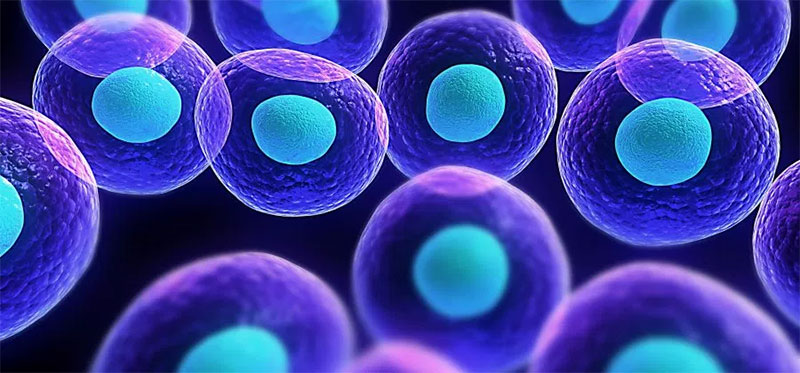ADVERTS
Everything about the chemical aspects of the cell
The laws that govern the physical and chemical phenomena of living matter are the same as those of inanimate matter. However, vital phenomena result from substances highly organized into units called cells.
To maintain its structure and carry out its functions, the cell needs water, mineral salts, carbohydrates, lipids, proteins, nucleic acids and adenosine triphosphate.
ADVERTS

Water
Water represents about 70% of cellular volume. A solvent for numerous substances, it serves to transport materials both intra and intercellularly and participates in many chemical reactions. Therefore, all cells have a mechanism to maintain their water content constant.
The amount of water varies depending on the type and age of the organism and the metabolic activity of the organ or tissues: it is greater in younger organisms and in the most active tissues and organs.
Proteins
ADVERTS
Proteins are the fundamental substances of living beings. They take part in the membranous, tubular, filamentary and granular structures of all cells. They are constituents of bones (osseyrla), muscles (actin, myosin, myoglobin), blood (albumin, globulin, prothrombin, fibrinogen), skin (keratin), tendons, nerves, hormones, antibodies and proteins. .
The –NH radical of proteins functions as a base and the -COOH radical functions as an acid. Depending on the equality of the number of these radicals or the predominance of one over the other, proteins can be neutral, basic or acidic. Hence the importance of the pH of the solutions where they are found.
Among the foods rich in proteins we can mention milk and derivatives (cheese, cottage cheese, yogurt, coagulated cheese), meat, eggs, . legumes (beans, green beans, soybeans, peas, lentils, lupins, peanuts, chickpeas, etc.).
Plant cells synthesize the 20 types of amino acids that make up the proteins we need, while animals can only synthesize some of them. That is why it is advisable to have a varied diet so that we can receive all the amino acids we need.
Mineral Salts
Mineral salts can be found in undissociated form and dissociated into ions. In the first case, they form the skeletons, carapaces, shells and eggshells of many land animals. In dissociated form, mineral salts participate in numerous cell activities.
Examples:
Iron ions (Fe” and Fe”') are important in respiratory chain reactions (electron transport) and in the composition of blood hemoglobin; where its deficiency causes anemia.
Iodide ions (I) participate in the formation of thyroid gland hormones. This is why in packets of table salt;
In addition to sodium chloride (NaCl); there must also be sodium iodide (NaI).
Carbonate (C0) and bicarbonate (HC0) ions are important in maintaining acid-base balance in intra-extracellular environments.
Nucleic acids
Acids constitute a group of substances that direct the synthesis of enzymes and thus control the chemical activities of the cell.
There are two types of nucleic acid: deoxyribonucleic acid (DNA) and ribonucleic acid (RNA). Both are macromolecules made up of three components: sugar – deoxyribose (DNA) and ribose (RNA): puric and pyrimidine nitrogenous organic bases: phosphoric acid.
- Puric bases: adenine (A) and guanine (G)
- Pyrimidine bases: thymine (T), cytosine © and uracil (U)
A base, a sugar and a phosphoric acid combine to form a nucleotide, which is the unit of nucleic acids. As there are five nitrogenous bases, five different nucleotides are formed.
DNA is made up of four different nucleotides adenine nucleotide, temine nucleotide, guanine nucleotide and cytosine nucleotide, which are arranged in long chains or sequences, constituting a polynucleotide.
DNA exists in the nucleus, mitochondria and chloroplasts. In the nucleus, it is found in the chromosomes linked to proteins. RNA is found in both the nucleus and the cytoplasm. DNA is mainly related to the hereditary transmission of characteristics, and RNA is related to the control of cellular activity.
Lipids
Lipids are mixtures of organic substances with a predominance of esters. Lipids have the following physical characteristics:
- They are insoluble in water and soluble in organic solvents (benzene, chloroform, ether, alcohol);
- They are unctuous to the touch;
- They leave a translucent stain on the paper.
From a biological perspective, lipids are important substances because, together with proteins, they form the living membranes of cells (plasma membrane, nuclear membrane) and the walls of many cellular organs (endoplasmic reticulum, mitochondria, Golgi complex, etc.) In free form, they are energy suppliers and can accumulate to constitute an energy reserve and function as a thermal insulator (in adipose tissue).
